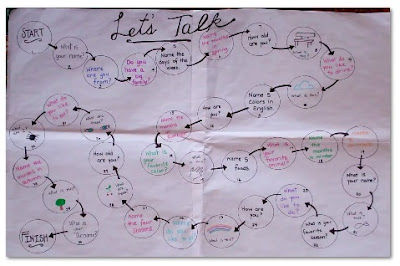Prepositions of
Time
Warm-Up/Review:
Begin by reviewing the following prepositions with the
students (here they are shown in Ukrainian).
Then, have students translate them into English:
Presentation of
New Material:
Have students copy the following chart into their exercise
books, or onto a sheet of paper.
Fill in the Ukrainian rules of use….
…and then have the students help you to translate them into
English.
Finally, give them examples for each rule of use.
Students will recreate the chart by pairing the correct
preposition with its rules of use, both in Ukrainian and in English.
Application:
Students will be given cards, or squares of paper, with
examples on them. Students must then A) choose the correct preposition for this
example, and then B) create a full sentence communicating an event in this time
example.
For example:
1.
The evening à In the evening à I
eat dinner in the evening.
2.
Tuesday à On Tuesday à
I have geography class on Tuesday.
3.
Lunch à At lunch à
I see my friends at lunch.
4.
…Monday…Friday à From
Monday to Friday à I go to school from Monday to
Friday each week.
Check for Understanding:
Students will read their sentences aloud to the class; the
other students will agree or disagree and help to correct any errors.

































